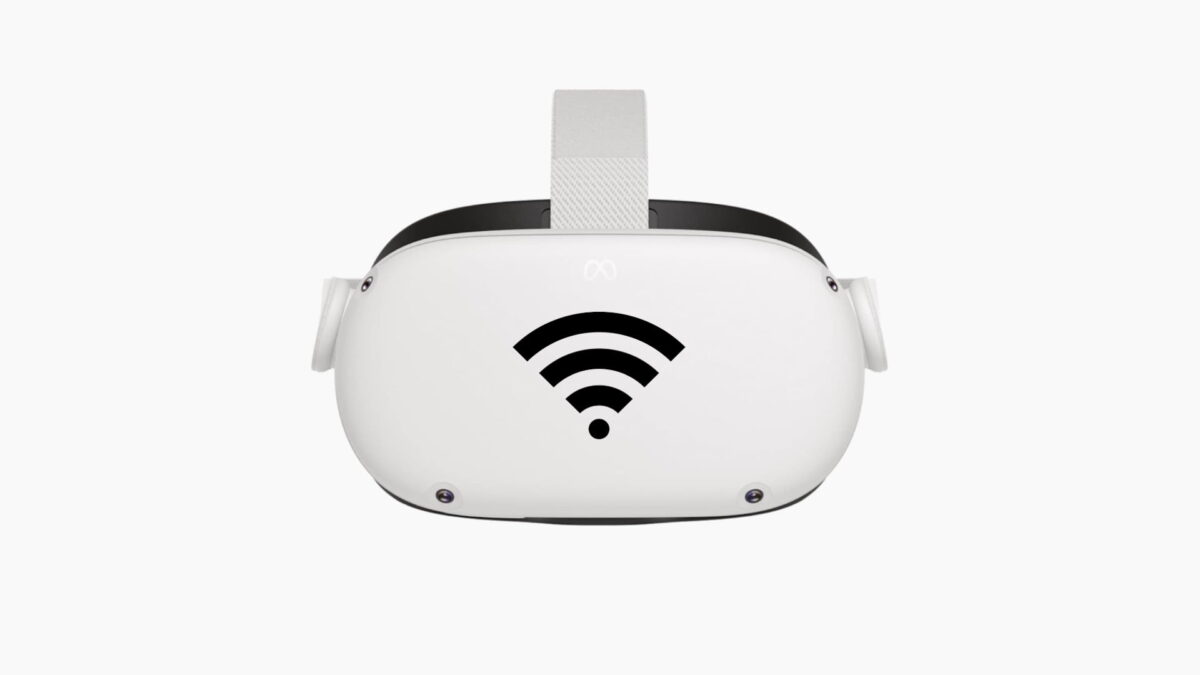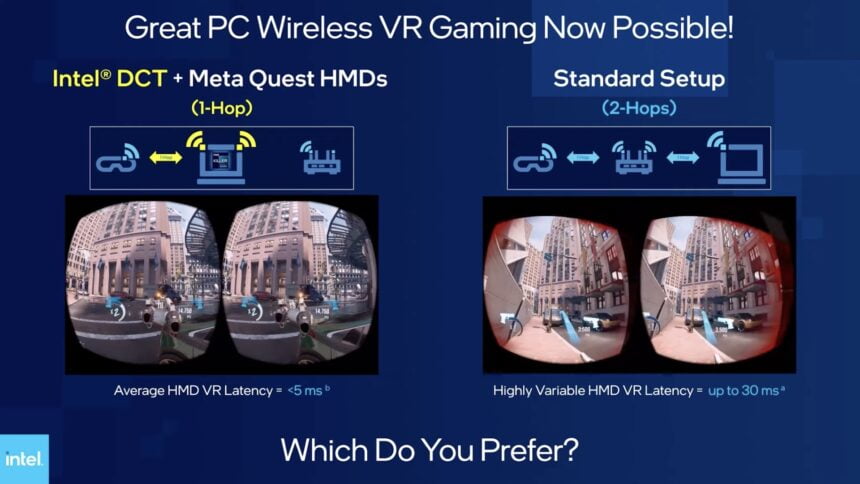Intel brings direct PC VR streaming without router or dongle for Meta Quest

- Guy Godin's opinion added at the end of the article.
Intel and Meta cooperate on PC VR streaming and enable a direct connection between Meta Quest and PC - with low latency.
For optimal PC VR streaming (instructions), you need a USB cable connection, a (dedicated) router or Meta's VR Air Bridge Wi-Fi dongle.
In the future, there will be another way to connect Meta Quest 2 or Meta Quest Pro to a PC, which does not require a cable, router, or dongle and achieves a latency of under 5 milliseconds according to first measurements. Standard setups have an average latency of 30 ms.
Intel and Meta have collaborated to optimize Intel's AX1690 Wi-Fi chip for PC VR streaming. According to the press release, this functionality is currently only available for Intel's HX processors, which are intended for gaming laptops. If you're looking to buy a gaming laptop in the near future and enjoy playing PC VR games, it might be worth paying attention.
How Intel's PC VR streaming works
The new streaming solution is based on Intel's Double Connect Technology (DCT) and was unveiled at CES last week. DCT was introduced a year ago, but has only now been optimized for PC VR use.
DCT enables two simultaneous Wi-Fi connections between PC and external devices. In the case of PC VR streaming, one of the two "channels" is reserved for a direct connection between Meta Quest 2 or Meta Quest Pro, while the other is for communication with a router as usual.

The difference between Intel's DCT solution and a standard setup. | Image: Intel
With the direct Wi-Fi connection between PC and VR headset, the router (or Wi-Fi dongle) is no longer needed for PC VR streaming. The result is a much easier setup as well as 20 percent lower latency, Intel writes. Basically, you don't need more than a laptop and the Meta Quest headset.
Meta aims to remove hurdles to PC VR gaming
The DCT functionality is currently only supported by Intel's AX1690 chip and HX processors. Corresponding motherboards are manufactured by Acer, Dell, Lenovo, MSI and Gigabyte, among others.
Only Meta Quest Pro will benefit from the bandwidths and features of Wi-Fi 6E (as soon as Meta enables support for the Wi-Fi standard via update, which should happen soon), but Meta Quest 2 is also compatible with the technology, Meta's Wireless CEO Bruno Cendón writes on Twitter.
Very proud of this collaboration with @intel to make wireless PCVR seamless and more efficient with @MetaQuestVR https://t.co/CIo0KPNqjN
- Bruno Cendón (@BrunoCendon) January 7, 2023
The collaboration with Intel shows that Meta continues to work on solutions for smooth PC VR gaming. Recently, Meta's chief technology officer Andrew Bosworth emphasized that PC VR gaming is still very important to Meta and teased this solution. The question, of course, is whether Intel's technology will be more widely available in the future (for desktop PCs, for example).
The video below illustrates how the technology works.
Update:
Virtual desktop developer Guy Godin, who has worked with VR streaming for years, thinks Intel's claim of 5ms latency is "marketing BS."
"Network latency is already around 5ms (not 30ms) when using the recommended setup; a router with your computer wired to it."
Note: Links to online stores in articles can be so-called affiliate links. If you buy through this link, MIXED receives a commission from the provider. For you the price does not change.